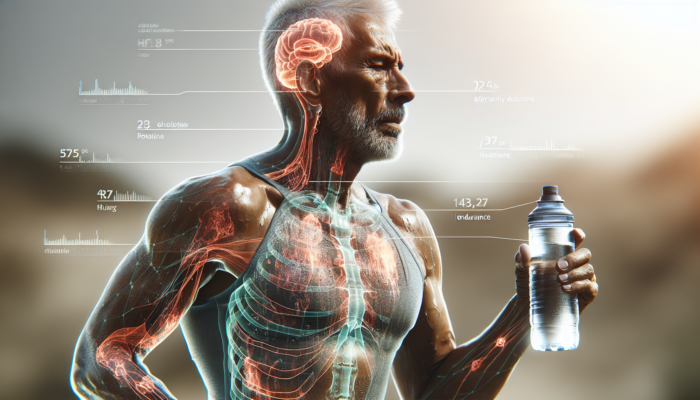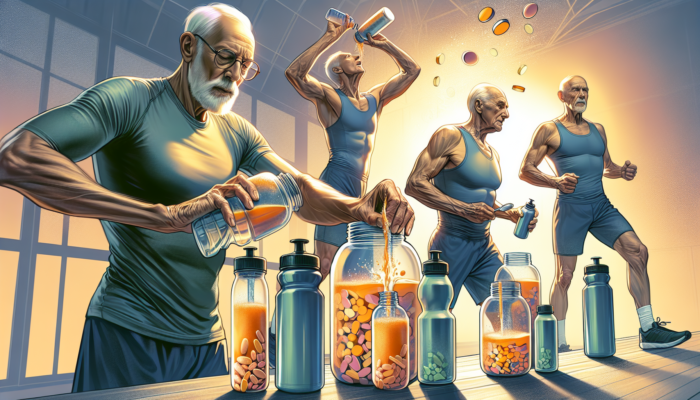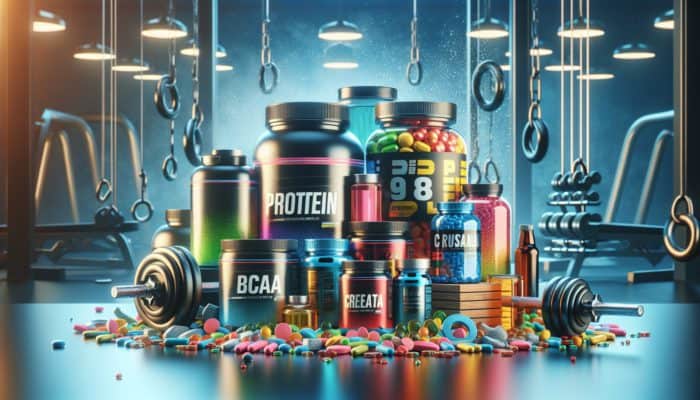Boost Athletic Performance in Seniors with Smart Hydration Techniques
Discover the Key Benefits of Maintaining Optimal Hydration for Elderly Athletes

Hydration transcends mere thirst quenching; it is a cornerstone of overall health and athletic prowess, particularly for senior athletes. Aging brings physiological shifts, such as a diminished thirst response, which can lead to decreased fluid intake and an increased risk of dehydration. For older athletes, prioritizing hydration is crucial for sustaining endurance, boosting physical capabilities, and safeguarding cognitive health during physical activities. Research consistently shows that dehydration can have detrimental effects on both physical and mental performance, leading to slower reaction times and heightened fatigue. Adequate hydration acts as a protective barrier against heat-related illnesses, especially during intense exercise in warm conditions. By focusing on fluid intake, senior athletes can significantly decrease their risk of heat exhaustion and heat stroke, which are particularly dangerous for older populations.
Moreover, staying well-hydrated is essential to prevent musculoskeletal injuries. Proper hydration enhances muscle elasticity and function, substantially reducing the likelihood of strains or sprains. Given that senior athletes often face joint stiffness and muscle loss associated with aging, hydration should be a critical component of their training regimens. The benefits of hydration extend to recovery as well; it plays a vital role in flushing out metabolic waste, aiding nutrient delivery, and alleviating muscle soreness post-exercise. Thus, recognizing the significance of hydration is crucial for an elderly athlete's health management strategy, enabling them to actively participate in sports and physical activities well into their later years.
Recognizing Early Signs of Dehydration for Optimal Health Maintenance
For older athletes, the ability to identify dehydration symptoms is vital, especially since they may not feel thirsty even when their bodies need fluids. Key warning signs include a dry mouth, dizziness, fatigue, and decreased urine output. In more severe instances, dehydration can trigger confusion and disorientation, posing risks during physical activities. Many senior athletes may underestimate their hydration needs, particularly during exercise or in warmer climates. Thus, being vigilant about these symptoms is essential for ensuring their safety and overall well-being.
A practical method for assessing hydration status involves checking urine color. Ideally, pale yellow urine signifies adequate hydration, while darker shades indicate a need for increased fluid intake. Elderly athletes should develop a habit of regularly checking their urine color throughout the day, particularly before and after exercise sessions. Another clear indicator of dehydration is the feeling of a dry mouth, which often intensifies during vigorous workouts. This symptom may sometimes be misinterpreted as hunger; however, recognizing that a dry mouth typically signals dehydration can prompt timely hydration actions.
Awareness of these indicators empowers elderly athletes to implement proactive hydration strategies instead of waiting for symptoms to arise. This preventative approach helps them maintain peak physical condition during their sporting activities. Ignoring early signs of dehydration can lead to more serious issues, including heat cramps and other heat-related health concerns. Therefore, educating elderly athletes about recognizing dehydration symptoms is vital for promoting effective self-management of their hydration needs.
Enhancing Recovery Through Strategic Hydration Practices
The link between hydration and recovery is a fundamental consideration for elderly athletes. Post-exercise hydration is crucial for the body’s recovery process, as it replenishes lost fluids and essential electrolytes necessary for optimal muscle function. Adequate fluid intake significantly reduces muscle soreness and fatigue, allowing for quicker recovery between training sessions. For elderly athletes, who may already contend with slower recovery times due to age-related factors, effective hydration becomes even more crucial.
Studies reveal that dehydrated individuals often face prolonged recovery times and increased muscle stiffness, which can adversely affect their performance in future activities. Hydration is instrumental in eliminating metabolic waste products, including lactic acid, that can build up during intense workouts and contribute to muscle soreness. Furthermore, when elderly athletes rehydrate, they enhance nutrient absorption, which is essential for providing vital vitamins and minerals that contribute to muscle repair and energy replenishment.
To optimize recovery, elderly athletes should focus on rehydrating immediately after exercise and maintaining hydration throughout the day. Implementing a structured hydration plan can help sustain fluid levels, ensuring a swift and effective recovery process. This plan might include consuming hydrating foods, such as fruits and vegetables, in addition to regular fluid intake. By prioritizing hydration in their recovery strategy, elderly athletes can improve their chances of remaining active, energetic, and dedicated to their athletic goals.
Exploring Various Hydration Aids to Enhance Athletic Performance

The Essential Role of Water in Achieving Optimal Hydration
Plain water is the cornerstone of hydration, especially for elderly athletes. It is easily accessible and plays a critical role in maintaining essential bodily functions. Approximately 60% of the human body is composed of water, underscoring its importance in various physiological processes, such as regulating body temperature and transporting nutrients. For elderly athletes, consistently drinking enough water throughout the day is vital to counteract the gradual decline in their thirst perception that occurs with age.
Water is recognized as the primary source of hydration for elderly athletes, helping them maintain fluid balance while minimizing risks associated with sugary or caffeinated beverages. Unlike sports drinks, water is calorie-free and devoid of additives, making it the ideal choice for hydration before, during, and after exercise. Additionally, the simplicity of water allows for versatile consumption methods, whether by drinking it directly, infusing it with fruits for added flavor, or mixing it with electrolyte powders for enhanced hydration.
Practical strategies such as carrying a water bottle or setting reminders to drink can facilitate regular water intake. Elderly athletes should aim to consume water consistently rather than relying solely on thirst signals, as these cues can often be delayed. Furthermore, incorporating hydrating foods into their diet, such as cucumbers and watermelon, can help meet hydration needs. By making water the foundation of their hydration strategy, elderly athletes can effectively boost their performance and overall health.
Exploring the Advantages of Sports Drinks for Optimal Hydration
Sports drinks offer significant benefits for elderly athletes engaged in high-intensity physical activities. These beverages are specifically formulated to replenish electrolytes and carbohydrates lost during extended exercise sessions. Electrolytes such as sodium and potassium are crucial for maintaining fluid balance and ensuring proper muscle function. For elderly athletes, who may be more susceptible to dehydration due to age-related factors, consuming sports drinks at strategic intervals can greatly enhance performance and recovery.
The advantages of sports drinks become particularly evident during prolonged workouts or vigorous activities that result in substantial fluid loss through sweating. Research indicates that consuming a sports drink while exercising can improve endurance and reduce fatigue compared to relying solely on water. This benefit is especially vital for elderly athletes, who may experience decreased endurance and increased tiredness during physical exertion.
However, elderly athletes must approach sports drink selection with caution. Some products may contain high sugar levels or artificial additives that do not align with their nutritional objectives. Choosing lower-calorie options or those specifically designed for hydration can help athletes reap the benefits without unnecessary caloric intake. Additionally, understanding the optimal timing for sports drink consumption can maximize their effectiveness. Consuming these beverages before or during intense workouts ensures that athletes maintain electrolyte balance while enhancing their performance. By incorporating sports drinks into their hydration strategy, elderly athletes can effectively meet their unique hydration needs and support their athletic aspirations.
Improving Hydration with Senior-Centric Supplements

Hydration supplements, available in powders and tablets, provide a convenient solution for elderly athletes looking to enhance their hydration strategies. These products are designed to be mixed with water, delivering additional electrolytes, vitamins, and minerals that bolster hydration and athletic performance. For elderly athletes with specialized hydration needs, these supplements can be particularly beneficial in addressing specific requirements.
A major advantage of hydration supplements is their capacity to deliver essential nutrients directly to the body, often more efficiently than relying solely on dietary sources. Many hydration supplements contain key electrolytes such as sodium, potassium, and magnesium, which are vital for maintaining fluid balance and preventing muscle cramps. For elderly athletes who may face age-related muscle weakness or cramping, incorporating these supplements can provide valuable support during training sessions.
Additionally, the flexibility of hydration supplements allows for easy customization based on individual preferences and workout intensities. For instance, an elderly athlete participating in a long endurance event might opt for a hydration supplement formulated for performance, while someone engaging in lighter exercise may choose a simpler electrolyte powder. This adaptability ensures that elderly athletes can find hydration solutions that align with their lifestyles and athletic goals.
Before incorporating hydration supplements into their regimen, it is essential for elderly athletes to consult with healthcare professionals, particularly if they have existing health conditions or are on medications. Customizing hydration strategies to meet individual needs can optimize performance while enhancing overall well-being, enabling elderly athletes to excel in their athletic endeavors.
Implementing Effective Hydration Strategies for Maximum Athletic Performance
Pre-Exercise Hydration: A Key Element for Optimal Preparation
Beginning any exercise with adequate hydration is a foundational principle for effective performance among elderly athletes. Establishing pre-exercise hydration strategies ensures that athletes start their activities fully prepared, which sets the stage for optimal performance. The human body requires sufficient fluids to support cardiovascular function, regulate body temperature, and enable muscle contractions during physical exertion.
Elderly athletes should aim to consume a blend of water and electrolyte-rich fluids at least 30-60 minutes before engaging in exercise. Research indicates that establishing a proper hydration baseline enhances endurance and helps to avert fatigue and heat-related complications during workouts. For elderly athletes, who may face an increased risk of dehydration, this precaution is especially important.
Moreover, hydration should extend beyond the day of exercise. Developing a routine that includes consistent fluid intake in the days leading up to an event or training session can significantly influence overall hydration status. Encouraging a habit of sipping water throughout the day—even when not feeling thirsty—can reinforce proper hydration practices. Additionally, monitoring urine color can effectively assess pre-exercise hydration levels; pale yellow indicates adequate hydration, while darker colors signal a need for more fluids.
By prioritizing pre-exercise hydration, elderly athletes can substantially enhance their performance and minimize the risk of dehydration-related complications during their athletic activities. This foundational strategy is a straightforward yet powerful approach for maintaining sustained energy levels and vitality throughout their physical endeavors.
Maintaining Hydration During Exercise: Actively Managing Fluid Loss
Ensuring hydration throughout exercise is crucial for optimal performance among elderly athletes. As physical exertion increases, so does the risk of fluid loss through sweating. Elderly individuals may not respond to heat and exertion in the same way as younger athletes, making it even more imperative for them to consistently sip fluids during workouts. Implementing a structured hydration plan during exercise can help ensure peak performance and prevent dehydration-related issues.
The key to successful hydration during exercise lies in taking small, continuous sips rather than consuming large amounts infrequently. Research suggests that sipping fluids every 15 to 20 minutes can help maintain hydration levels more effectively than drinking large quantities at once. Elderly athletes should have access to water or sports drinks throughout their workouts, enabling them to stay ahead of their hydration needs. The choice of beverage can vary depending on the intensity and duration of the exercise; for shorter, less intense activities, plain water may suffice, while longer sessions may benefit from electrolyte-rich sports drinks.
Environmental conditions should also dictate hydration strategies. In hot and humid climates, the body loses fluids more rapidly, necessitating that elderly athletes increase their fluid intake. Monitoring environmental factors and adjusting hydration strategies accordingly can help mitigate the risks associated with heat stress. Keeping track of sweat loss and modifying fluid intake based on individual needs will ensure that elderly athletes maintain optimal performance levels throughout their workouts.
Incorporating hydration strategies during exercise empowers elderly athletes to actively manage their hydration status, allowing them to confidently push through training sessions. By remaining vigilant about fluid intake, they can optimize their performance and fully engage in their athletic pursuits.
Post-Exercise Hydration: Essential for Effective Recovery
Rehydrating after exercise is crucial for elderly athletes striving for optimal recovery and overall health. Post-exercise hydration significantly aids in restoring lost fluids and electrolytes, which are vital for muscle recovery and function. Failing to rehydrate adequately can result in prolonged fatigue, muscle soreness, and diminished performance in future workouts.
Immediately following exercise, athletes should aim to consume fluids that effectively replenish what was lost during physical activity. While water is an excellent choice for immediate rehydration, incorporating electrolyte-rich beverages can further enhance recovery, particularly after intense or prolonged sessions. These drinks help restore the balance of electrolytes required for numerous bodily functions, including muscle contraction and nerve signaling.
An effective post-exercise hydration strategy includes consuming fluids within the first 30 minutes after activity. This window is critical for optimal recovery, as the body is primed to absorb nutrients and replenish stores. Furthermore, elderly athletes should continue to hydrate in the hours following exercise, ensuring fluid levels are restored throughout the day. Research suggests that monitoring body weight can provide insights into fluid loss; athletes should aim to drink approximately 16-24 ounces of fluid for every pound lost during exercise.
Combining hydration with nutritious foods can also promote optimal recovery. Consuming a balanced meal that includes hydrating foods—such as fruits and vegetables—can further support the replenishment of fluids and nutrients. By prioritizing post-exercise hydration and recovery, elderly athletes can enhance their performance, alleviate muscle soreness, and maintain active lifestyles.
Strategies for Effectively Monitoring Hydration Levels
Evaluating Hydration Status Using Urine Colour Analysis
One of the most straightforward yet effective methods for elderly athletes to monitor their hydration level is through urine colour analysis. The colour of urine directly reflects hydration; pale yellow typically indicates sufficient hydration, while darker shades suggest dehydration and a need for immediate fluid intake. This simple method provides a visual cue to guide hydration choices throughout the day.
Understanding the relationship between urine colour and hydration allows elderly athletes to make informed decisions. For example, if an athlete notices that their urine has darkened, it signals an urgent need to increase fluid consumption. This self-assessment is especially beneficial for elderly athletes who may not recognize thirst cues, as relying solely on these signals can lead to insufficient hydration.
In addition to urine colour, the frequency of urination can also signify hydration status. Regular restroom visits typically indicate adequate fluid intake. If an elderly athlete experiences infrequent urination or observes darker urine, it’s important to adjust hydration strategies promptly. Integrating a habit of checking urine colour into daily routines can empower elderly athletes to manage their hydration proactively, supporting their overall health.
Incorporating education about urine colour monitoring can also raise awareness among elderly athletes regarding the importance of hydration. By making this simple practice a part of their daily routines, they can gain greater autonomy in effectively managing their hydration needs.
Using Weight Monitoring as a Hydration Assessment Tool
Weight monitoring is another effective strategy for elderly athletes to assess their hydration levels. Tracking changes in body weight before and after exercise can provide valuable insights into fluid loss and the amount of fluid needed for rehydration. This method is particularly beneficial during longer workouts or intense training sessions, where fluid loss can significantly impact performance and recovery.
A general guideline suggests that for each pound lost during exercise, an athlete should aim to consume approximately 16-24 ounces of fluid to restore hydration levels. By consistently weighing themselves before and after workouts, elderly athletes can develop a personalized hydration plan that accounts for their unique fluid loss patterns. This information can help guide their hydration strategies, ensuring they meet their specific needs during physical activities.
However, elderly athletes need to recognize that weight fluctuations can occur due to various factors, including dietary intake and clothing. Therefore, weight tracking should be conducted consistently under similar conditions, such as at the same time of day and in comparable attire. Utilizing body weight as a hydration tool empowers elderly athletes to take proactive measures to maintain their hydration status, thereby reducing the risk of dehydration-related complications.
Educating elderly athletes about the significance of weight monitoring can enhance their understanding of hydration needs while fostering accountability. By integrating this strategy into their routine, they can effectively manage their hydration and support their athletic performance.
Recognizing Thirst Signals for Better Hydration Management
Thirst recognition is a crucial yet often overlooked aspect of hydration for elderly athletes. As individuals age, the body's thirst sensation can diminish, resulting in inadequate fluid intake. Elderly athletes may remain unaware of when to hydrate, increasing their risk of dehydration during physical activities. Encouraging a proactive approach to hydration can significantly alleviate this issue.
Elderly athletes should avoid waiting until they feel thirsty to drink fluids. Instead, they should establish a regular hydration routine, ensuring they consume fluids consistently throughout the day. Setting reminders to drink water, carrying a water bottle, or incorporating hydration into their daily schedules can reinforce the importance of regular fluid intake. This proactive strategy can prevent dehydration before it becomes a significant concern.
Moreover, educating elderly athletes about the signs of dehydration can foster greater awareness. Understanding that thirst is not always a reliable indicator of hydration needs can empower them to take control of their fluid intake. Practical strategies, such as drinking water with meals or setting hydration goals, can further support their efforts.
By promoting awareness of thirst and encouraging a regular hydration routine, elderly athletes can significantly enhance their performance and overall health. Prioritizing hydration ultimately allows them to continue enjoying their athletic pursuits without the risks associated with dehydration.
Evaluating Hydration Levels with the Skin Turgor Test
The skin turgor test is a simple yet effective method for elderly athletes to evaluate their hydration levels. This assessment involves pinching the skin on the back of the hand or forearm and observing how quickly it returns to its normal position. When adequately hydrated, the skin should quickly revert to its original position; conversely, if it takes longer to return or appears to “tent,” it may indicate dehydration.
Learning how to conduct this test empowers elderly athletes to actively engage with their hydration needs. Skin turgor can serve as a visual cue regarding hydration status, acting as a practical reminder to stay hydrated throughout the day. Regularly conducting this test can help athletes recognize changes in hydration levels, allowing them to adjust their fluid intake as necessary.
However, it’s essential to note that skin turgor may not be a completely reliable indicator of hydration status, particularly for those experiencing age-related changes in skin elasticity. Therefore, this test should be used alongside other monitoring strategies, such as urine colour assessment and weight monitoring, to provide a more comprehensive understanding of hydration needs.
By incorporating the skin turgor test into their hydration monitoring routine, elderly athletes can actively manage their hydration status. This straightforward tool can enhance their awareness and encourage them to prioritize hydration as part of their overall health and athletic performance.
Key Considerations for Hydration in Elderly Athletes
Understanding How Medications Impact Hydration Needs
Recognizing the relationship between hydration and medication intake is critical for elderly athletes. Many older adults take medications that can influence hydration levels by increasing urine output or altering thirst perception. Understanding these effects is essential for developing effective hydration strategies tailored to individual requirements.
Diuretics, commonly prescribed for conditions such as high blood pressure, often lead to increased fluid loss. Elderly athletes using diuretics should exercise particular caution regarding hydration, as they may need additional fluids to offset this loss. Regularly monitoring hydration status through urine colour and weight can help ensure they remain adequately hydrated while on these medications.
Moreover, certain medications may cause dry mouth or diminish the sensation of thirst, leading to inadequate fluid intake. In such instances, elderly athletes must adopt proactive hydration habits, such as setting reminders to drink water and incorporating hydrating foods into their diets. Consulting with healthcare providers can also provide valuable insights into how specific medications impact hydration needs, enabling athletes to develop tailored hydration plans that support their athletic performance.
By understanding the effects of medications on hydration, elderly athletes can take control of their hydration status, ensuring they remain healthy and active in their pursuits. This knowledge empowers them to navigate potential challenges and prioritize hydration as an integral aspect of their overall wellness.
Adapting Hydration Strategies Based on Climate Conditions
The impact of climate on hydration needs cannot be overstated, particularly for elderly athletes. Hot and humid conditions significantly increase fluid loss through sweating, leading to a heightened risk of dehydration during physical activities. Recognizing these environmental factors is essential for creating effective hydration strategies that support optimal performance and health.
Elderly athletes should adjust their hydration plans based on weather conditions. In warmer climates, increasing fluid intake before, during, and after exercise is vital to compensate for the increased sweat loss. Additionally, exercising during cooler times of the day, such as early mornings or late evenings, can help mitigate the risk of overheating and dehydration. Wearing lightweight, breathable clothing can also assist in regulating body temperature and minimizing excessive sweating.
Identifying the












